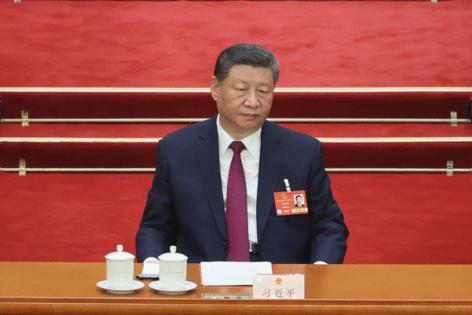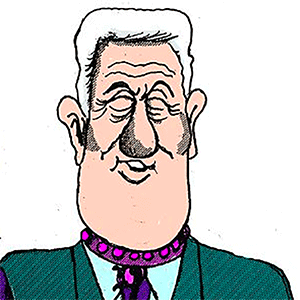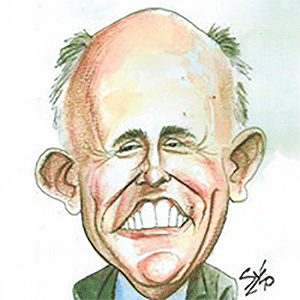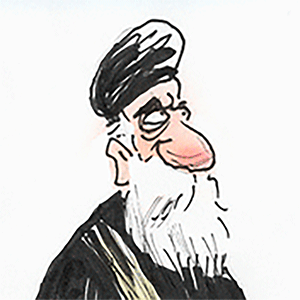Analysis: Xi defiance pays off as Trump meets most China trade demands
Published in News & Features
Xi Jinping’s decision to stand his ground against Donald Trump could hardly have gone any better for the Chinese leader.
After two days of high-stakes talks in Switzerland, trade negotiators from the world’s biggest economies announced Monday a massive de-escalation in tariffs. In a carefully coordinated joint statement, the U.S. slashed duties on Chinese products to 30% from 145% for a 90-day period, while Beijing dropped its levy on most goods to 10%.
The dramatic reduction exceeded expectations in China, and sent the dollar and stocks soaring — providing some much-needed market relief for Trump, who is facing pressure as inflation looks set to speed up at home. Chinese equities also surged.
The deal ended up meeting nearly all of Beijing’s core demands. The elevated “reciprocal” tariff for China, which Trump set at 34% on April 2, has been suspended — leaving America’s top rival with the same 10% rate that applies to the UK, a longtime ally.
The U.S. met Beijing’s call for a point person for talks by setting up a mechanism headed by Treasury Secretary Scott Bessent. And the two sides agreed to take “aggressive actions” to stem the flow of fentanyl, which could eventually lead to the elimination of the additional 20% tariff.
“This is arguably the best outcome that China could have hoped for — the U.S. backed down,” said Trey McArver, co-founder of research firm Trivium China. “Going forward, this will make the Chinese side confident that they have leverage over the U.S. in any negotiations.”
Xi struck a defiant tone ever since Trump began raising U.S. tariffs to their highest level in a century. In contrast to other world leaders, he refused Trump’s repeated calls to get on the phone with the U.S. president — even as levies rose to levels that China called a “joke.”
Officials in Beijing instead cut key interest rates and took other steps to fortify China’s economy, while dispatching diplomats around the world on a charm offensive to secure fresh markets for Chinese products and decry U.S. “bullying.”
Although China began feeling economic pain, with factory activity starting to slump, Xi enjoyed a surge of nationalism at home encouraging him to avoid bending to U.S. coercion. Trump, meanwhile, faced increasing pressure from business lobbies, market players and members of his party who feared losing their seats in midterm elections next year.
“The lesson is economic power matters,” said Gerard DiPippo, associate director of the RAND China Research Center. “For Beijing, it’s a strategic vindication, and one that makes Xi’s focus on manufacturing and self-reliance harder to argue against, at least from an economic security perspective.”
Trump said Monday that he could speak to Xi as soon as the end of this week, as he touted a “total reset” in ties with China. He noted that the deal doesn’t include sectoral tariffs on cars, steel, aluminum and potentially pharmaceuticals. Bessent told CNBC separately that the U.S. doesn’t want a generalized decoupling but wants to protect strategic necessities including steel, medicines and semiconductors.
“The relationship is very good,” Trump said of China at a briefing on Monday. “We’re not looking to hurt China. China was being hurt badly. They were closing up factories. They were having a lot of unrest, and they were very happy to be able to do something with us.”
Once the trade talks were announced last week, the choice of Geneva already indicated the U.S. was ceding some ground. China has long preferred that substantive talks take place in private, away from television cameras and prying reporters.
The highly stage-managed truce was notable along with the fact Trump didn’t front-run the news on social media, according to Deutsche Bank strategist George Saravelos. “All of this is a clear signal of negotiations moving in to a more conciliatory and respectful” phase, he added, citing that as another Chinese demand.
For China’s part, Vice Premier He Lifeng’s team agreed to roll back “non-tariff” measures imposed since Liberation Day, without elaborating. Getting relief on export controls imposed on rare earths was a priority for the White House, after it came under pressure from firms using such minerals for industrial magnets.
Beijing also didn’t pledge to increase investment from the U.S., and Bessent said purchase agreements might come later. U.S. Trade Representative Jamieson Greer made clear the “phase one” deal from Trump’s first trade war, which committed China to buying $200 billion of U.S. goods, hadn’t been under discussion.
“The talks were very much focused on how do we get the tariff levels to something that is not an embargo, but still allows the United States to pursue its goal of trade deficit reduction,” he said.
China now has a three-month window to strike a broader deal with the U.S. that rebalances trade while safeguarding its own interests. Beijing has devoted years since Trump’s first term to reducing its dependence on the U.S. for key imports, buying more agricultural products from partners in emerging markets such as Brazil.
Just like during Trump’s first term, China will not compromise on key parts of its economic and political system, including how state-owned enterprises are run, according to Song Hong, deputy director of the Institute of Economics at the Chinese Academy of Social Sciences, a ministry-level institution under the State Council, akin to China’s cabinet.
“Beyond the red lines, there are a lot of gaps we can fill through negotiations,” he added, citing things like tariffs, intellectual property rights and subsidies.
Dong Yan, director of the trade department at another institute under the Chinese Academy of Social Sciences, said it was a good development while cautioning that Trump could yet hike them again.
“We have learned our lesson from Trump 1.0, where we saw that tariff negotiations can go back and forth rather than being achieved overnight,” she said.
The reduction in tariffs should make it easier for Chinese policy makers to hit a growth target of about 5% this year. ING bank upgraded its gross domestic product forecast to 4.7% for this year after the deal, saying May and June exports to the U.S. are likely to bounce back sharply.
The suspension window could lead to more frontloading of shipments and production, according to Robin Xing, chief China economist at Morgan Stanley, who also cautioned that a “durable resolution remains challenging given the complex bilateral relationship.”
Although the reduction in tariffs is a positive development, Trump has still made it clear the world is no longer in a “wonderful globalization mode,” Alicia Garcia Herrero, chief Asia Pacific economist at Natixis told Bloomberg Television.
“It is better to bifurcate slowly and steadily and nicely,” she said. “Rather than fighting over it as we were doing right before this conversation started in Geneva.”
_____
(With assistance from Katia Dmitrieva, Rebecca Choong Wilkins, Jing Li and Jenny Leonard.)
_____
©2025 Bloomberg L.P. Visit bloomberg.com. Distributed by Tribune Content Agency, LLC.







Comments